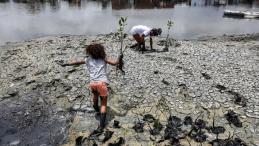In the Global South, the electronics industry exerts a pronounced environmental footprint, driven by both domestic production and the influx of imported e-waste. Countries like Ghana, Nigeria and India serve as hotspots for informal e-waste processing sites such as Agbogbloshie highlight how electronic waste is openly burned, releasing toxic chemicals into soil, air, and water, and exposing thousands to health hazards.
Resource extraction for electronics minerals like cobalt, copper, and rare earths from nations such as the DRC and China also imposes deep ecological and social costs. Contamination of water bodies, land degradation, and exploitation of fragile communities are well documented.
The Resource Nexus framework offers a systems lens to analyze these impacts holistically recognizing water, energy, land, materials, and ecosystem interdependencies. Its adoption enables the identification of trade-offs and synergies across the lifecycle of electronics from minerals extraction to e-waste disposal and facilitates integrated strategies for more sustainable governance.
The project aims to develop analytical and management tools that inform policy, circular economic design (like extended producer responsibility, sustainable electronic and design for recycling), and equitable governance across scales local, national, and international by systematically mapping resource flows and environmental effects.
This project is funded by the German Academic Exchange Service (DAAD) under the NEXtra (Network of Excellence for Training on the Resource Nexus) programme at the United Nations University Institute for Integrated Management of Material Fluxes and of Resources (UNU-FLORES).





